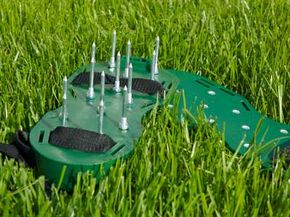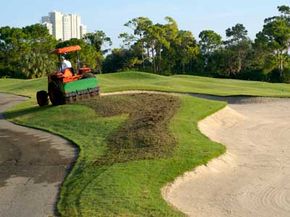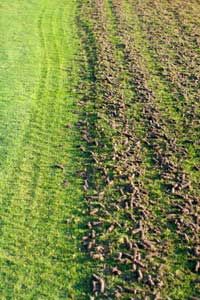Your new neighbors seemed so normal at first. Everyone seemed to take such good care of their yards, the streets were quiet and the neighborhood association even brought you a fruit basket. Then, one day, the stabbings began.
First, you noticed Carl from across the street repeatedly jabbing some kind of two-pronged spear into the ground. Then you caught sweet Mrs. Mackey walking around her lawn with rows of 2-inch (5-centimeter) steel spikes strapped to the soles of her shoes. Before you knew it, the other neighbors were at it as well, pushing around spike-wheeled machines that looked like something out of "Mad Max 2: The Road Warrior." You wondered what was happening to the neighborhood. Why was everyone was so obsessed with stabbing holes into their lawns? Were they fighting off an unseen mole people invasion, or was it a case of lawnicidal madness?
Advertisement
Good thing you didn't call the police. As it turns out, your neighbors weren't angry at their lawns. In fact, they were just working hard to keep them up through lawn aeration. This perfectly normal outdoor chore involves boring holes in a lawn to keep everything growing healthily. The tools involved range from manual lawn aerators you push into the ground to spiked wheels and even gas-powered machines that bore plugs out of the ground. They may look like torture devices, but they're essential to maintaining a beautiful, healthy yard. Yes, even Mrs. Mackey's deadly looking footwear is merely a popular lawn aerator tool, not a weapon against the legions of underground mole people.
Still suspicious? Well, on the next page we'll look at the reason soil and grass benefits from aeration and how to go about aerating your own lawn.
Advertisement


